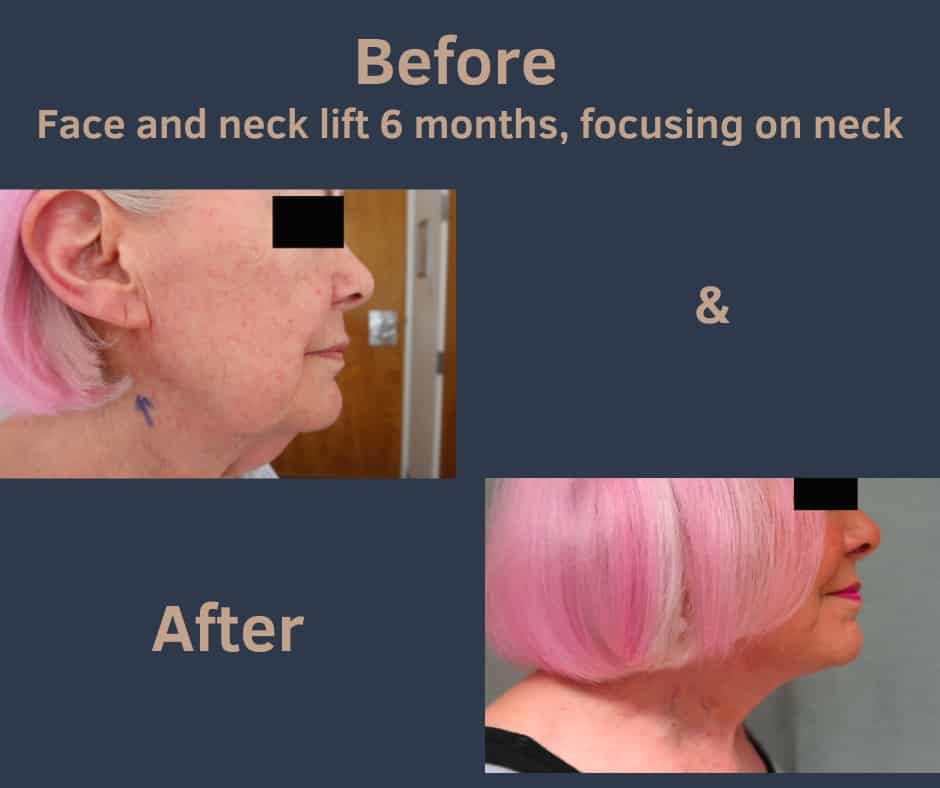During a facelift, incisions are made in inconspicuous areas, such as along the hairline and around the ears. The surgeon will then lift and reposition the underlying facial tissues, remove excess skin, and potentially redistribute fat to restore a more youthful appearance. In some cases, additional procedures like neck lift or eyelid surgery may be performed simultaneously to achieve comprehensive rejuvenation.
The procedure is typically performed under general anesthesia or local anesthesia with sedation, ensuring your comfort throughout the surgery. The duration of the procedure can vary depending on the extent of the facelift and any additional procedures being performed.
After the surgery, you can expect some swelling, bruising, and discomfort, which can be managed with prescribed medications and proper post-operative care. It is important to follow your surgeon’s instructions regarding wound care, activity restrictions, and follow-up appointments to ensure optimal healing and results.
Facelift
- During a facelift, incisions are made in inconspicuous areas, such as along the hairline and around the ears.
- The surgeon will then lift and reposition the facial tissues, remove excess skin, and potentially redistribute fat to restore a more youthful appearance.
- In some cases, additional procedures like neck lift or eyelid surgery may be performed simultaneously to achieve comprehensive rejuvenation.
- The procedure is typically performed under general anesthesia, ensuring your comfort throughout.
- The duration of the procedure can vary depending on the extent of the facelift and any additional procedures being performed.
- After the surgery, you can expect swelling, bruising, and discomfort, which can be managed with medications and proper post-operative care.
- It is important to follow your surgeon’s instructions regarding wound care, activity restrictions, and follow-up appointments to ensure optimal healing and results.
Do:
1. Research and choose a qualified and experienced surgeon
2. Have a thorough consultation – discuss your goals, expectations, and any concerns with your surgeon during the consultation. This will help ensure that you have realistic expectations and are well-informed about the procedure.
3. Follow pre-operative instructions – your surgeon will provide specific guidelines for the surgery, such as avoiding certain medications or supplements.
4. Plan for proper recovery – arrange for someone to assist you during the initial recovery period and follow your surgeon’s post-operative instructions carefully.
5. Maintain a healthy lifestyle – a balanced diet, regular exercise, and avoiding smoking and excessive alcohol consumption can contribute to optimal healing and long-term results.
Don’t:
1. Rush the decision – take your time to research and consider all aspects of the procedure before making a decision. Avoid being influenced by external pressures.
2. Ignore the risks and potential complications. While facelift surgery is generally safe, it’s important to be aware of the potential risks and complications associated with the procedure. Your surgeon will discuss these with you during the consultation.
3. Expect immediate results. It takes time for swelling and bruising to subside, and for the final results to become apparent. Patience is key during the recovery process.
4. Neglect post-operative care Follow your surgeon’s instructions for post-operative care, including proper wound care, avoiding strenuous activities, and attending follow-up appointments.
5. Skip the research on your surgeon: Ensure that your surgeon has the necessary qualifications, experience, and a good reputation. Look for reviews and testimonials from previous patients.


 Book a Consultation
Book a Consultation
